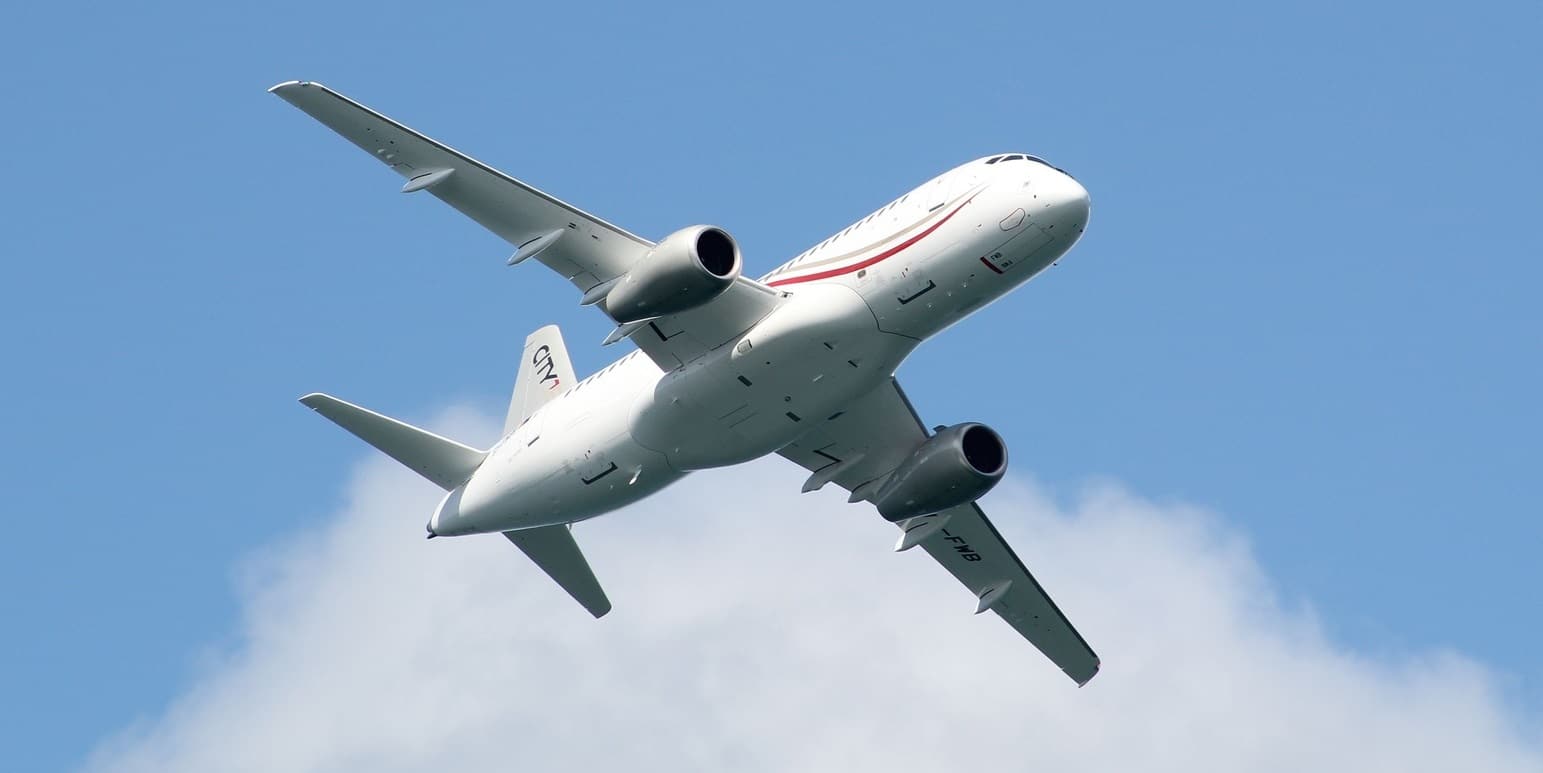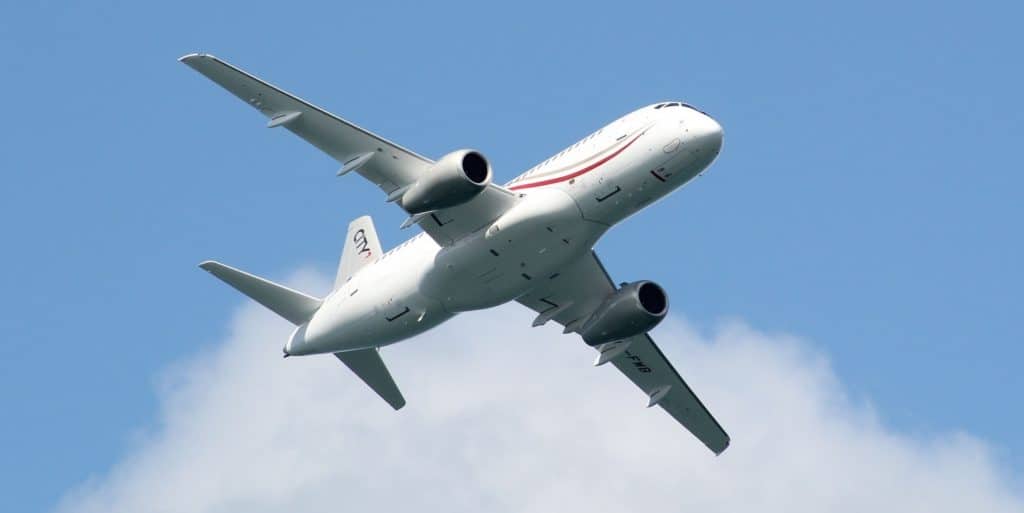
Have you ever been flying and wondered why the airplane banks over during a turn? Cars don’t do this so why do airplanes? This is usually most noticeable when coming into land or shortly after takeoff as it gives us all a great view of the world beneath us, but what is going on when an airplane turns?
Airplanes bank when they turn to create a horizontal force to pull the aircraft around the turn. Airplanes create lift to keep it aloft but to turn the airplane needs a horizontal force ‘Centripetal Force’ to allow it to change direction. Movable flaps called ailerons allow the airplane to bank.
As we all know, to stay in the air and fly, airplanes must generate lift. This lift is created by engines pushing or pulling the aircraft through the air and as it does so this air moves over its wings creating its lift.
In straight and level flight the forces of lift, weight, centripetal force, and centrifugal force are balanced. To make a turn the pilot must get the airplane to change one of these forces. The turn is performed by rolling or banking the airplane to one side with ailerons or spoilers on its wings, and the banked condition creates a side force that achieves the turn.
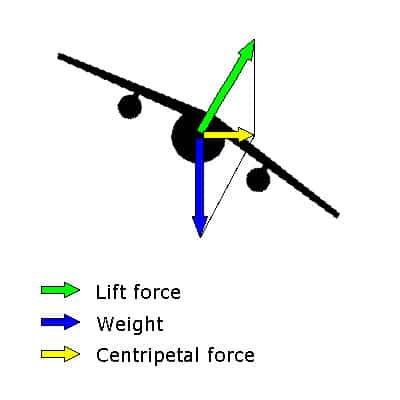
This change of angle in the Lift Vector is what allows the airplane to turn. This is why the aircraft banks over. If the aircraft did not lean in the direction the pilot wishes to turn the forces acting on the aircraft would not change and it would continue to fly over the same path across the ground.
This turning is achieved by controlling the rolling moment of the aircraft.
What is Aircraft Roll Control?
Aircraft have 3 axes of movement: Pitch, Roll, and Yaw. To turn an aircraft ‘Roll’ is the rotation around an axis from the airplane’s nose to its tail. This movement tilts the upward-acting lift vector toward the direction the pilot wishes to go. Roll is controlled using spoilers on the wing tips called Ailerons.
If you have ever been watching an airplane’s wing out of the window during the flight you may have noticed these ailerons in action, and if you have a really keen eye you would have noticed they make the wing rise or fall depending on which way the aileron’s moved.
Ailerons are mounted on each wing tip and work as a pair by deflecting in opposing directions, changing the effective form of the wing near the tip.
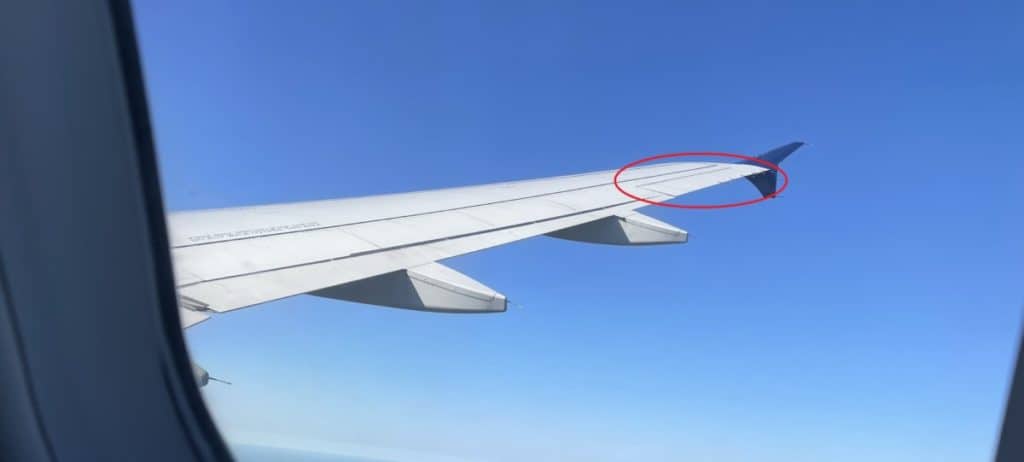
Moving the aileron downwards deflects the air rushing over the wing downwards causing that wing to rise.
Moving the aileron upwards deflects the air rushing over the wing upwards causing that wing to fall.
Did you ever stick your hand out of a moving car window as a kid and tilted it? It would deflect air and force your hand up and down. This is what the ailerons do.
Because each wing is attached to the aircraft fuselage, as one wing goes up, the other must go down. This creates the rolling moment along the aircraft’s roll axis and causes the aircraft to bank toward the direction of the turn.
The pilot controls these ailerons by turning the yoke on their flight controls like a steering wheel in your car. Rolling the yoke left makes the left aileron go up causing the left wing to drop, and makes the right aileron go down causing the right wing to climb. This rolls the aircraft to the left.
The more they turn the yoke, the more the ailerons deflect air making the angle of the bank greater.
Learn More…
Try These Articles:
* Why Do Airplanes Fly in a Curve?
* Why Do Airplanes Shudder on Takeoff?
What Happens During a Banked Turn?
The airplane is starting to alter its direction and turn now that it has banked. The side force caused by the banked orientation does this, and this side force is known as Centripetal Force. Lift is the vertical upward force provided by the wings keeping the aircraft flying and Centripetal Force is what pulls the aircraft around its turns.

As long as ailerons keep deflected, the plane will keep turning in a banked position. To stop the turn the pilot must center the ailerons to bring the Lift Vector back to pointing straight up. This will then remove the Centripetal Force and allow the airplane to travel in a straight line again.
During banked turns there are also two other factors that the pilot or aircraft automation has to deal with:
- Losing Altitude
- Adverse Yaw
Losing Altitude
When an aircraft is in a level cruise the vertical lift it creates equals its weight so it neither climbs nor descends. When that lift vector begins to rotate to one side during a turn, less of the lift is now pointing vertically upwards. This makes the vertical lift being created become less than the weight of the aircraft and therefore the aircraft will descend during a turn.
The more the aircraft banks, the more the vertical lift component tilts towards the horizon and the less the lift acts vertically upwards. The higher the bank angle, the more the aircraft will descend.

Join My Newsletter & Get Great Tips, Information and Experiences To Help You Become a Superb Pilot!
To overcome this, the pilot must compensate by pitching the nose up and applying more power to increase the vertical lift component. Once the vertical lift component equals the aircraft weight the airplane will maintain altitude during the turn.
As the pilot rolls out of the turn they must then reduce the pitch-up attitude and power setting or the aircraft will climb once levelled out of the turn.
Adverse Yaw
Adverse yaw is a situation that happens when an aircraft goes into a banked turn and the lift and drag created by each wing changes slightly. The wing that has the aileron deflecting up creates slightly less lift and less drag compared to the aileron on the opposite wing.
This imbalance in drag wants to pull the nose of the airplane in one direction. For example:
- Pilot wants to turn to the left:
- Rotates the yoke flight control to the left
- Right aileron deflects down forcing the right wing to rise
- Right aileron creates slightly more lift and slightly more drag
- Left aileron deflects up forcing the left wing to fall
- Left aileron creates slightly less lift and slightly less drag
This creates more drag on the right-hand side of the aircraft causing the airplane’s nose to want to pull to the right as the pilot enters a left turn. The turning of the nose of the aircraft is known as Yaw and because the nose is Yawing in the opposite direction to the turn it is known as Adverse Yaw.
This causes what is more commonly known as a Slip and occurs in all aircraft, not just airplanes:
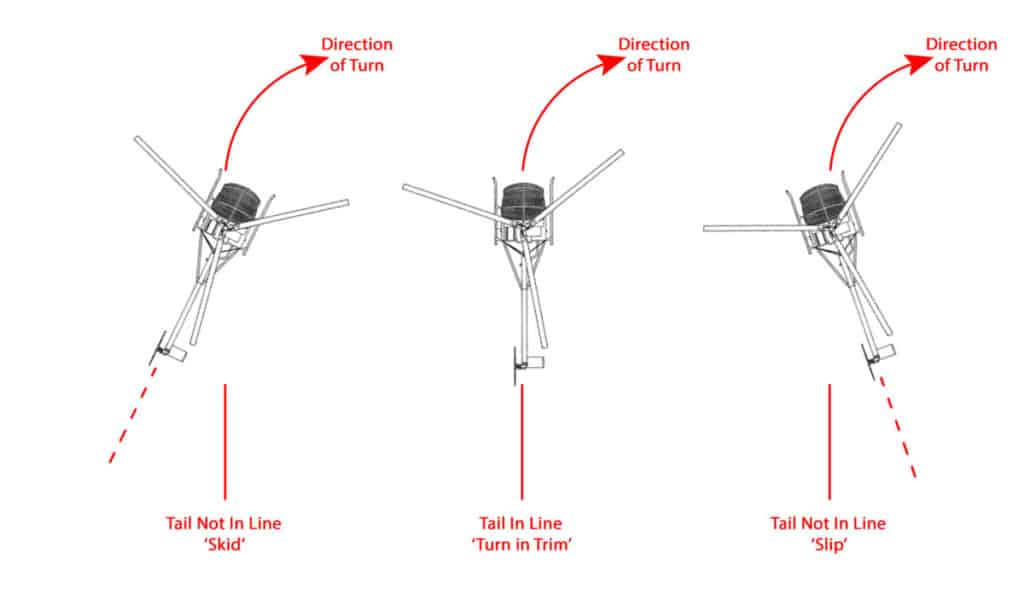
To counteract this ‘Adverse Yaw’ the pilot or automation must use the foot pedals to control the vertical stabilizer also known as the Rudder on the rear of the aircraft.
Learn More…
Try These Articles:
* How Do Pilots Understand Air Traffic Control (ATC)?
* Why Do Airplanes Fly in Circles?
What is Yaw Control?
The rudder, placed on the vertical tail at the back of the aircraft, is responsible for controlling the plane’s direction. The aft section of the vertical tail is formed by the rudder, which also functions as a flap. It is possible to generate a yawing moment about the aircraft’s center of gravity by rotating the flap, which will cause a change in the sidewards force.
A pilot will employ the rudder to compensate for the adverse yaw when rolling into a turn. When turning to the left the pilot will put in slightly more left pedal to stop the adverse yaw pulling the nose to the right. If the pilot puts in the correct amount of rudder using the pedals the nose will remain centered and is referred to as Flying in Trim or a Coordinated Turn.
In the case of crosswind landings or asymmetric power control, the aircraft’s rudder is also employed to counteract adverse yaw.
Here is a great video of an Airbus A380’s massive rudder working hard during a challenging crosswind landing:
Can a Plane Turn With Just the Rudder?
The rudder controls the direction of the aircraft’s nose & it is generally not used to turn the plane when in flight but will be used to trim the airplane to ensure it completes coordinated turns. Rudders are mainly used to align aircraft to runways during crosswind landings & to turn while taxiing.
To keep the airplane aligned with the runway on final approach the pilot will use the rudder to yaw the nose of the aircraft into wind to allow the shadow of the aircraft to fly straight down the approach path
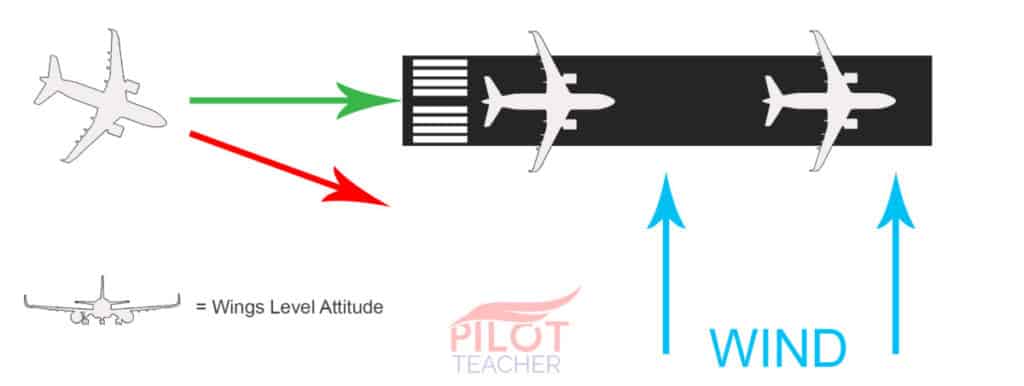
If the pilot did not use the rudder to yaw the nose into the wind it would blow the aircraft off the approach path and they would miss the runway:
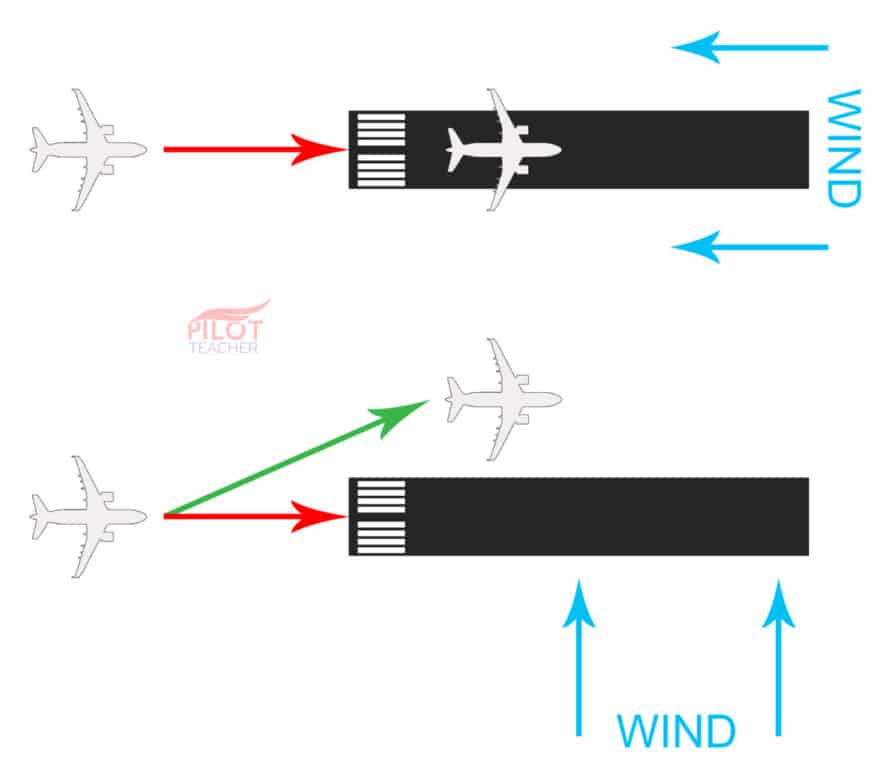
As seen in the A380 video above, the pilot centers the nose just before touchdown using the rudder then keeps the nose pointing straight as the aircraft comes out of flight and into ground contact.
For smaller aircraft that do not have steering control of the nose wheel during taxiing the pilot will use the rudder to control the aircraft’s steering. Aircraft like Cessna’s, Piper’s, and Mooney’s are typical aircraft that use the rudder to steer the aircraft.

